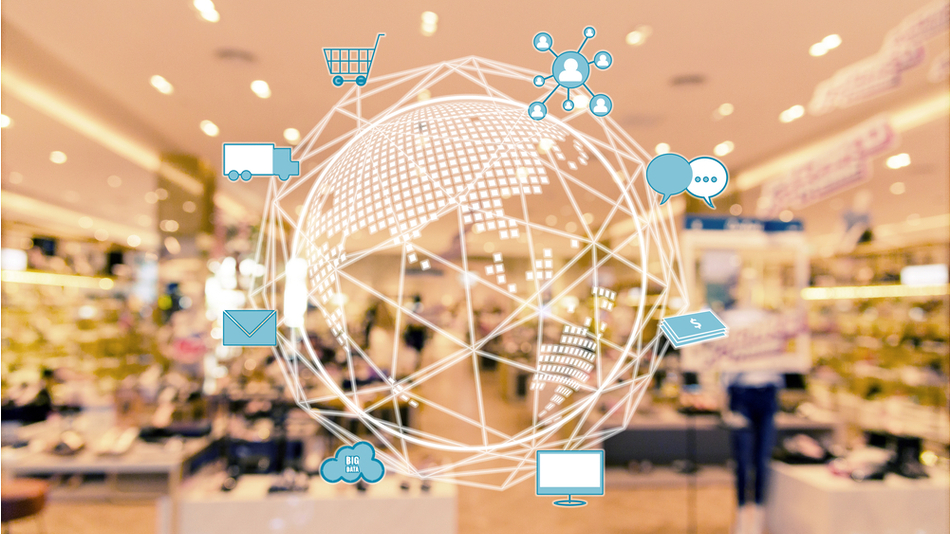No one would ever say retailers don’t hustle. Consider all the change that’s happened over the last decade. Shopping became easier and more convenient while options have expanded. Well-known retail brands have crumbled and filed for bankruptcy. Retail isn’t endangered. Rather, it’s evolving. The smart brands have, anyway.
It’s true, brick-and-mortar stores have seen declines. That doesn’t mean they are obsolete. Most people, about 80% of shoppers, research online before buying. So, they may start online, but they purchase in-store.
The Age of Omni-Channel Emerges
Because of this, retailers understand the need for an omni-channel in their approach to create the ultimate experience for buyers. This means that they anticipate many different touchpoints. The touchpoints in store are often assisted by the Internet of Things (IoT) devices. Sensors and smart beacons have the ability to and are changing the in-store scenario, as if the shopping trip was curated for customers.
The need to get more personal and custom with buyers is fueling the growth of retail IoT. It stands to hit $94 billion by 2025. But what’s driving this number? It’s not just one thing, it’s a perfect storm. For this post, the focus is on consumer demand and behavior.
Consumer Demand Driving Retail IoT Adoption
First there is the demand from consumers for a better, more convenient purchase experience. To meet these expectations, retail IoT will play an important role. If a brand knows its shoppers, then it will know when they’re at one of their brick and mortar locations.
Think of how retailer apps provide you with in-store availability. If you pull up the Target app, it knows where you are because you are probably also on their Wi-Fi. So, it lets you shop your store. If they don’t have something you need, it gives you other options.
You can also scan UPC codes to see if items are on discount through their Cartwheel savings platform, now part of the Target app. If there is no coupon available, it suggests similar items.
Now, if Target used sensors and smart beacons, they could take the experience further. If a customer that is digitally known to Target is in a particular store department like clothing, they could receive an alert for a discount, resulting in more purchases.
How Consumers Shop Is Shaping Retail IoT
The way in which consumers shop has dramatically changed. E-commerce changed everything. And now, when most anything can be delivered, the in-store experience has to contend with a lot more than just the retailer across the street.
How a consumer shops in the store unveils the consumer path. Data is collected from different retail IoT devices on how visitors interact with merchandise. Within the data, you’ll find consistent trends that tell you that shoppers spend a lot of time looking at your t-shirts, but you don’t sell many of them. Perhaps by adding a discount, you could sell twice as many.
The path throughout the store is measured in a similar way to how marketers look at heat mapping on their websites. It gives retailers an immense amount of data that could completely change a store layout to resemble what’s most important to your customers. Sell more of what they want.
The Connected Consumer
The connected consumer is one you want to have as a customer, especially if you are embracing technology and the IoT. In any store, a connected consumer would research items they’re considering buying to make sure they are getting the best, most convenient deal.
Wouldn’t it be great to send this type of consumer a custom message with a discount? This will certainly be a future state of IoT. The consumer has to be known to the brand’s network and sensors must identify them by their device. If a customer looking at flat-screen TVs while standing in front of them at Best Buy, it’s probably in Best Buy’s interest to send the customer a special offer. Otherwise, he’s going to walk out of there with no TV.
This scenario could even be part of certain brands targeting high-value customers. The in-store experience for this set of VIPs could be completely customized based on the shopper’s path and references.
Retail IoT is having a moment, and it will probably have many more on its way to being an almost trillion-dollar market. The consumer in-store experience had to and has to change. Going to a store shouldn’t feel like a chore. The customer demand for this experience makes the investment in IoT by retail extremely smart.
To learn how CB4 is revolutionizing the way retailers use data to spotlight floor execution issues, watch this short video.

